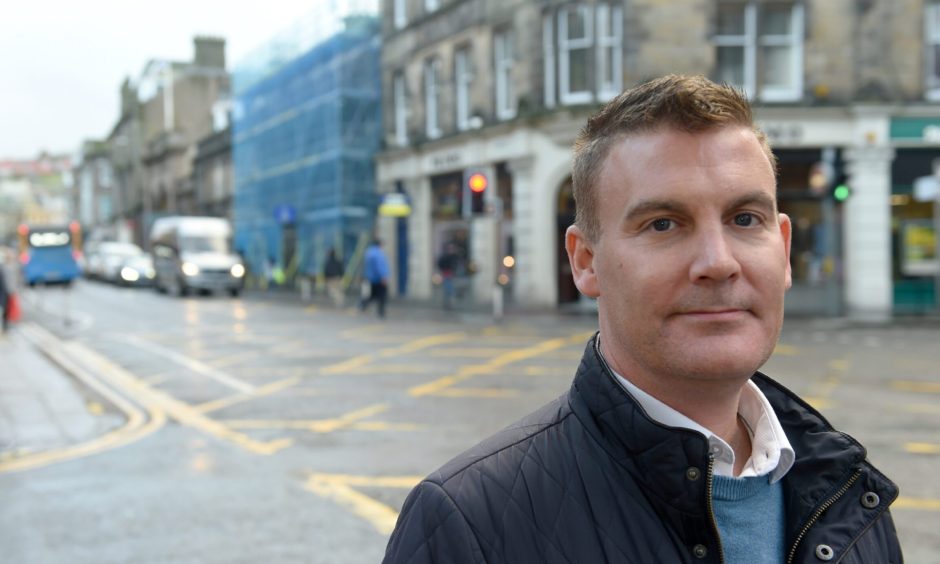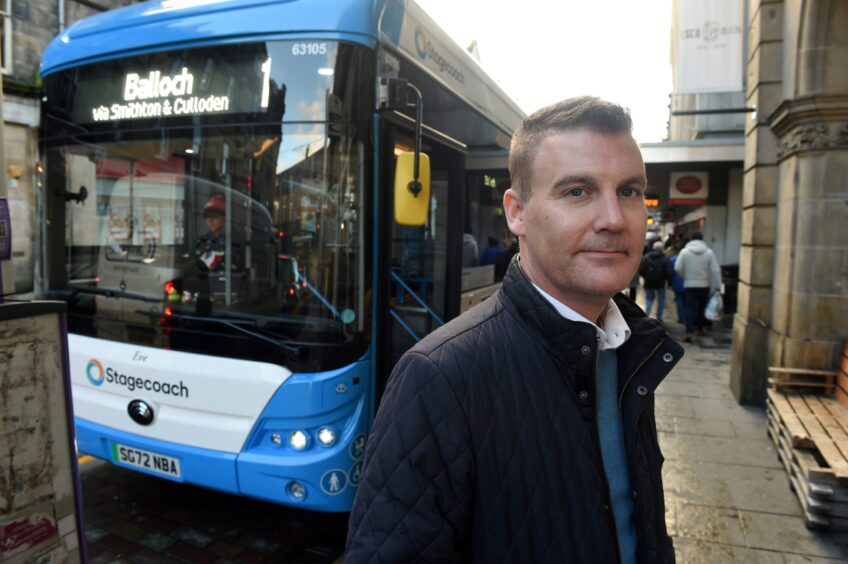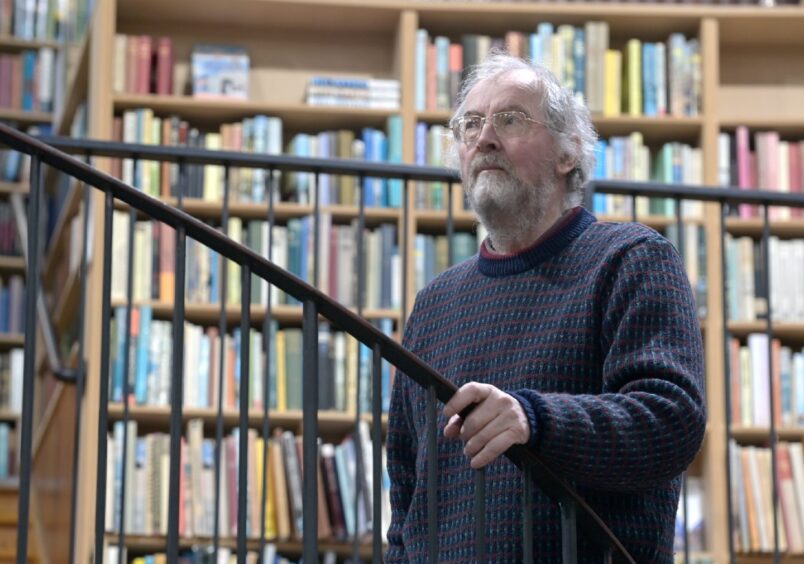
Inverness city centre is used to taking a bit of a kicking on social media.
But is it really dying? Or is it just simply changing?
Covid-19, inflation, the cost-of-living crisis and the rise of online retailers has created the perfect storm for our city centres.
Following on from the success of our Aberdeen high street tracker, The Press and Journal has now expanded our project to include Inverness’s high streets.
After weeks of work we have mapped the number of shops and empty businesses in key areas of the city centre.
In our project we found some buildings that haven’t been occupied for 10 years but that the vacancy rate shows a promising picture for the city.
Have you ever thought about what fills our high streets?
We got out on foot to audit our high streets and find out exactly what is there.
We’ve tracked more than 200 units across more than 10 of Inverness’s most popular shopping streets…
… And more than 60 units in the popular Eastgate Shopping Centre.
As part of our project we’ve launched a new high street tracker which covers both high streets and the Eastgate Centre. It shows whether units are occupied or vacant, what they are and if they’re closed what they used to be and roughly how long they’ve been closed for.
We’ll be keeping our maps up to date when shops open and close, so we can pinpoint exactly how our city centre is changing.
How many units are there on Inverness’s shopping streets and centre and how many are vacant?
For our high streets, we mapped out units on Academy Street, Baron Taylor’s Street, Bridge Street, Church Street, Drummond and Lombard Streets, Eastgate, High Street, Inglis Street, Queensgate, Rose Street and Union Street.
For our tracker, we have combined Drummond Street and Lombard Street into one street to track vacancy rates.
We have also mapped out the floor plans for the Eastgate Shopping Centre.
At the time of writing, Bridge Street and Rose Street both had an occupancy rate of 100% – with no vacant units on either street.
Union Street had the highest percentage of vacant units at 20%– five of the 26 units are vacant.
High Street had a vacancy rate of 16.7% – five of 30 units are empty, while Academy Street had a 15% vacancy rate, with six out of 40 units not currently occupied.
The second most populous shopping street in the city centre, plans aimed to help the regeneration of Academy Street have been controversial.
In September, a vote among Highland Council members was narrowly won to go ahead with a scheme to ban most private cars from the street, and adding bus lane sections between the junctions of Union Street and Queensgate in a bid to help reduce congestion.
However, questions remain on the impact this might have on neighbouring streets, where cars looking to travel this way will be diverted as a result.
Looking at the other main streets, Queensgate had a rate of 11.8% with two of 17 units not occupied.
Only one unit was vacant on Baron Taylor’s Street out of 11, a 9.1% vacancy rate, while Eastgate also had one vacant out of 10, 10% vacant.
Inglis Street also had one unit empty out of 13 – a 7.7% vacancy rate, as did Drummond Street and Lombard Street, resulting in a 5.9% vacancy rate as one out of 17 shopfronts are closed.
Church Street had three vacant units out of 54 – a 5.6% vacancy rate.
Across all of the high streets, the average vacancy rate is only 8.2%.
‘The city centre is still quite buoyant’
Scott Murray has seen plenty of change since he took over the old Moray Bar in Academy Street in 2009.
He transformed into Bar One, the city’s first dedicated cocktail bar.
Since then, his company, Cru Holdings, has grown and grown.
It now has numerous other city centre bars and restaurants in its stable, including Prime Steak and Seafood in Ness Walk and Scotch & Rye in Queensgate.
The summer tourist season consistently delivers a huge bounce for Inverness but Scott believes the city could learn a lot from Edinburgh about how to market itself as a year-round destination.
He said: “On the whole, it certainly felt busier back in 2009. But the city centre is still quite buoyant.
“It’s a different landscape than it was. You had lots of events and more people would come through from places like Aberdeen and Elgin.
“That was easier to do when public transport was a lot better, the last train wasn’t so early.
“Now it feels like much more of a local market.”
Meanwhile, things are slightly different in Inverness’s flagship shopping centre.
Out of the 74 units in the Eastgate Centre, 14 of them are currently sitting empty.
This results in an 18.9% vacancy rate, over 10% more than on the high streets.
Which city centre shops have been vacant the longest?
Some vacant units are being used for other purposes, such as pop-up shops for the festive season.
Others, like some in the Eastgate Centre, have been covered up by images to improve the aesthetics of the centre.
For those that are sitting empty, we’ve estimated how long some of the shops have been empty, and what they were before.
In Inverness, the longest empty unit is the former Eastgate Hostel on Eastgate.
It went on fire in April 2013, forcing 54 people to flee in the early hours of the morning.
Sat directly across from the entrance to the north’s main shopping centre, the burnt-out shell was a major eyesore for years.
After being covered with scaffolding, the front of the building was finally demolished in 2019.
The RBS branch on the High Street closed in 2018, although it relocated to within the Eastgate Centre.
In the Eastgate Centre, there’s several units that have been vacant for some time.
One of these is the former Topshop, which closed in 2019 after the brand, along with Philip Green’s other Arcadia stores, went into administration.
The former Debenhams, which spanned over three floors, has also been sitting empty since its closure in early 2021.
What types of units does Inverness have?
Charles Leakey has been working in the city centre since 1979, pre-dating the Eastgate Shopping Centre by four years.
His business, Leakey’s Bookshop on Church Street, has become an Inverness institution and regularly features in must-visit articles about the Highland capital.
The shop’s social media-friendly interior has meant it now feels busier than ever.
“There’s been a falling away of locally-owned businesses over the years,” Charles said.
“We’ve all been hit by out-of-town shopping centres and internet shopping. I can remember when the Eastgate wasn’t even here.
“Back then everything was in the town centre. But we’re not comparing it with that anymore, it’s so far in the past that it’s not really relevant.
“The figures for the city centre now sound pretty good. Certainly, things have been going exceptionally well at the bookshop in the last few years.
“That must indicate that there are plenty of people around.”
Across all the high streets we tracked, retail remains king in Inverness.
In total, there are 81 shopping units out of a total of 208- 38.9%.
There are 20 pubs across the centre – with eight alone located on Church Street.
And there’s a further 31 restaurants and cafes, nine of those are also on Church Street.
In the Eastgate Centre, most of the units are retail-based.
There’s a total of 45 shopping units- 73.8% of the centre.
However there is also eight food and drink outlets, four health and wellbeing units and two hair and beauty sites.
Where can I see more?
We will be tracking places opening and closing on the above mentioned streets and shopping centres as often as possible.
You can view our Inverness high street trackers which include both the shopping streets and the centre.
Can you help us keep our tracker up to date?
All of the data included within our high street tracker is collected manually by the data team and the reporter team in Inverness, and includes units opening and closing we’ve written articles on, as well as things we’ve noticed while out on foot in the area. Our last open dates may be estimates based on the best information we could find.
But we know we might not always spot everything, or get every closure date right.
We appreciate all the support we’ve received for our trackers so far, and would love if you would like to help us keep it up to date.
If there’s anything you spot opening or closing you’d like us to know about, or if you have more accurate information on closing dates of units or what the last business to occupy a unit was, you can let us know using the form below.




Conversation